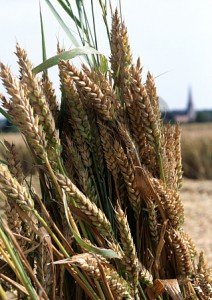An interesting article published in a review magazine of International Centre for Agricultural Research in the Dry Areas (ICARDA) discusses the feasibility of a second green revolution in India this week. Ram Badan Singh, president of the country’s National Academy of Agricultural Sciences feels the signs for another big bang in Indian agriculture are encouraging. “Gross capital formation in agriculture, as a percentage of agricultural GDP, increased from 12% in 2004-05 to 22% in 2010-11. Investment in agriculture has increased by 30% in recent years,” he points out.
The first green revolution in the 1960s and ‘70s catapulted India into becoming the second largest agricultural producer of the world. Though its second version might still be some years away, Singh says most experts feel its only a matter of time.
Of course, it would mean research integration, private investments and policy changes. Singh contends that the first green revolution involved a lot of environmental costs by way of unsustainable groundwater extraction, fertilizer run-off, pesticide residues and salinization. The priority was to resolve food shortages, and environmental issues were poorly understood. “Today we have a clearer understanding of how to monitor, control – even reverse – land and water degradation. We also have technologies that can increase yields without damaging the environment. These technologies are the key to a second Green Revolution,” he writes.
In trying to reach closer to the next big thing in Indian agriculture, technology will play a vital role, says Monkombu Sambasivan Swaminathan, the man credited for bringing about the first green revolution. The challenge would also be to bridge the rich-poor divide in technology, he says in this article in Nature India.
It would be worth watching policy changes and private participation in agriculute in the coming years to find out if the optimism surrounding Green Revolution II is real.
